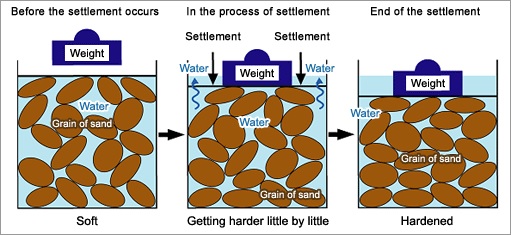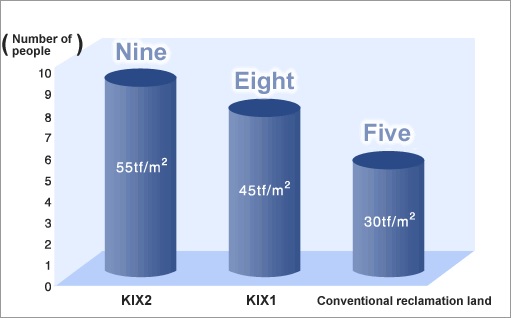
[KIX]
Why settlement occurs
Mechanism of Settlement Generation
Clay contains a surprising amount of water. Approximately 70 percent of the soft alluvial clay is water. Even the usually solid Pleistocene clay is 40 percent water.
The weight of the artificial island presses the water out of the clay layers of the seabed, and causes the land to settle. An illustration of this process the size decrease of a sponge when it is squeezed, in relation to the water being pushed out of it. However, water can be pressed out of a sponge quickly; the clay does not allow water to pass through easily. The settlement process takes around tens or hundreds of years to occur and the phenomenon is called "consolidation". The clay becomes increasingly harder as the water is pushed out of it, and ground settlement stops when the clay becomes sufficiently hard and is able to support the weight of the land.
The settlement of the seabed and sand compression make up the overall settlement process under the artificial islands of KIX.

<How the clay settles down>
The Airport Land is Very Heavy
Clay solidifies when kept in the ground for hundreds of thousands of years. The Pleistocene layers have hardened sufficiently so that traditional reclamation along the seashore would not press the layers down so much. However, Kansai International Airport's land is offshore, and required tons of sand for the reclamation. The pre-construction study showed that the weight of the reclamation sand that supports the Kansai International Airport land exceeds the clay layers’ support limit, and hence will generate a certain degree of settlement.

<Weight Comparison of Reclamation Lands>
 Measure against heavy rain
Measure against heavy rain Measure against heavy rain
Measure against heavy rain Customers who use Kobe Airport
Customers who use Kobe Airport